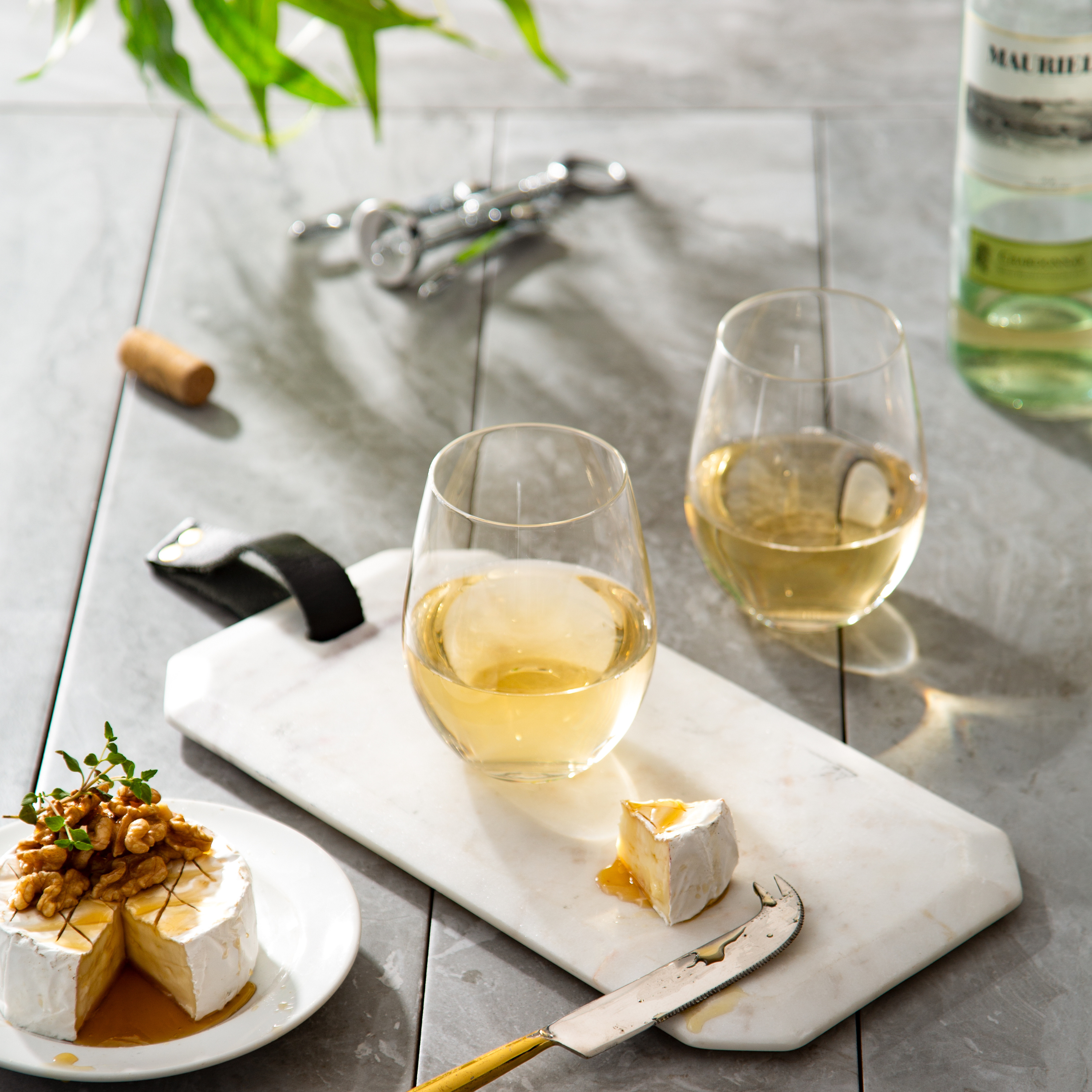Wine – a beverage enjoyed for centuries, boasting a complex tapestry of flavors and aromas. But the enjoyment extends beyond just the wine itself; what we drink wine from also plays an important part in the experience. Enter the stem vs. stemless wine glass debate, a question that has divided wine enthusiasts for years.
Join us as we dive into the world of stemless wine glasses and their stemmed counterparts, exploring the advantages and disadvantages of each. We'll also unveil the science behind the stem and how it can impact your wine experience.
Stemmed Wine Glasses: Timeless Elegance and Function
The classic stemmed wine glass is an iconic symbol of sophistication and refinement. Its elegant design features a stem, a slender extension that elevates the bowl from the base. To answer the age-old question - why do wine glasses have stems? - this seemingly simple design element offers several advantages:
- Temperature Control: The primary function of the stem is to prevent your hand from warming the wine in the bowl. Our body heat can significantly alter the taste of wine. By holding the glass by the stem, you maintain a comfortable grip without transferring heat to the wine, allowing it to stay at its ideal serving temperature.
- Aromas: The shape of a stemmed wine glass, with its narrower rim compared to the bowl, helps to concentrate the aromas of the wine. As you swirl the glass, the aromas are directed upwards towards your nose, enhancing your appreciation of the wine's bouquet.
- Formal Setting: Stemmed wine glasses are undeniably elegant. Their classic design elevates the ambiance of any formal setting, making them the perfect choice for special occasions and fine dining experiences.
- Durability (to a point): While seemingly fragile, stemmed glasses can be surprisingly durable when handled with care. High-quality stemmed glasses are often made from crystal or blown glass, offering excellent clarity and a certain weight that feels substantial in the hand.
However, stemmed wine glasses also have some drawbacks:
- Storage: Their elongated shape can make them space-consuming in cabinets and prone to tipping over.
- Breakability: The stem is the most delicate part of the glass, making them more susceptible to breakage if dropped or knocked over.
- Washing: Some stemmed wine glasses, particularly those with intricate designs, may not be dishwasher-safe, requiring hand washing.
- Quality: Not all stemmed wine glasses are made of lead free crystal, for those who are material conscious, this could be a huge deciding factor.
Stemless Wine Glasses: Convenience and Modern Appeal
A stemless wine glass is exactly what you would think: they’re wine glasses without stem! Stemless wine glasses have emerged as a popular alternative to their stemmed counterparts. Their modern, minimalist design features a bowl that sits directly on the base, offering a more casual and relaxed feel.
Here's why stemless wine glasses are gaining traction:
- Durability: Stemless glasses are generally more durable than stemmed glasses. The lack of a stem eliminates a potential breaking point, making them ideal for everyday use or social gatherings where things might get a little rowdy.
- Stability: Their wider base provides greater stability, reducing the risk of tipping over and potential spills.
- Dishwasher Safe: Stemless wine glasses are typically dishwasher-safe, making cleanup a breeze.
- Space-Saving: Their compact design allows for easier storage in cabinets and takes up less space on crowded countertops.
- Versatility: Stemless wine glasses can be used for various beverages beyond wine, such as cocktails, juices, or water.
However, stemless wine glasses do have some limitations:
- Temperature Control: As mentioned earlier, the stem on a traditional wine glass helps to insulate the wine from your body heat. Without a stem, there's a greater chance your hand warmth can affect the wine's temperature, especially for reds that are best served slightly cooler.
- Aromas: The wider bowl of a stemless glass may not concentrate aromas as effectively as a stemmed glass. This can be a disadvantage for wines that rely on their delicate bouquet to be fully appreciated.
- Formal Settings: The casual nature of stemless wine glasses might not be ideal for more formal occasions.
So, Stem or Stemless? The Choice is Yours!
Ultimately, the decision between stemless wine glasses vs stem comes down to personal preference and the situation.
- For the wine traditionalist who prioritizes temperature control and aroma concentration, stemmed glasses remain the preferred option.
- For the casual wine drinker who values convenience, durability, and a more relaxed atmosphere, stemless glasses might be a better fit.
Here are some additional factors to consider:
- The type of wine: Red wines typically benefit more from the temperature control offered by a stemmed glass. White wines and sparkling wines can be enjoyed in either stemmed or stemless glasses.
- The occasion: For a formal dinner party, stemmed glasses add a touch of elegance. For a casual gathering or picnic, stemless glasses are a more practical choice.
- Your personal style: Do you prefer a classic or a modern aesthetic? Choose the type of glass that best reflects your taste.
Beyond Stemless vs. Stemmed Wine Glasses: Additional Considerations
While the stem is a key differentiating factor, there are other aspects of wine glasses to consider:
- Glassware material: Crystal is the traditional choice for wine glasses, offering exceptional clarity and a beautiful sparkle. However, it can be fragile, expensive and not always free from lead. Lead-free crystal or glass is a more affordable and durable alternative, while still providing good clarity.
- Bowl size and shape: The size and shape of the bowl can impact the way the wine tastes and smells. For example, Bordeaux glasses have a larger bowl that allows for better aeration of red wines, while flutes are designed to concentrate the bubbles of sparkling wines.
- Personal preference: Ultimately, the best wine glass is the one you enjoy using the most!
So Long, Debate! Your Stemless vs. Stemmed Solution
The stem vs. stemless wine glass debate is a matter of personal preference. There's no right or wrong answer – both types of glasses have their own advantages and disadvantages. Consider the factors mentioned above to make an informed decision. Remember, the most important thing is to enjoy your wine!
Bonus Tip: If you're looking for a versatile option, consider double-walled stemless wine glasses. These glasses are insulated, helping to maintain the ideal serving temperature for both red and white wines. They also combine the convenience and durability of stemless glasses with a more modern aesthetic.
Ready to find your perfect match? Check out JoyJolt’s wine glasses! We've got a whole squad of stemmed, stemless, and double-walled beauties waiting to elevate your next wine tasting adventure. Cheers!





